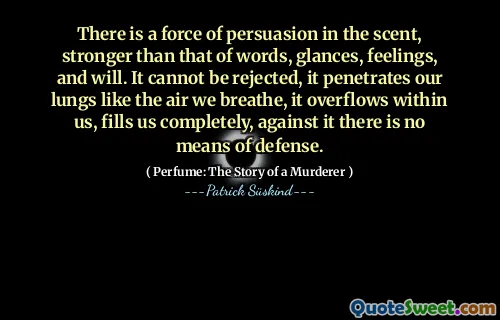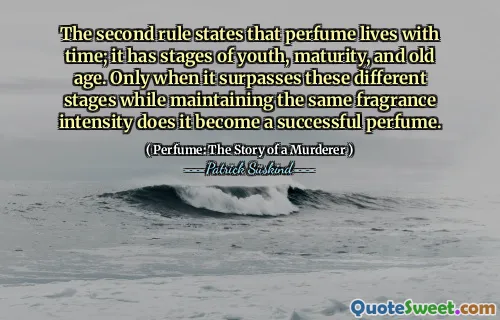
The second rule states that perfume lives with time; it has stages of youth, maturity, and old age. Only when it surpasses these different stages while maintaining the same fragrance intensity does it become a successful perfume.
This quote beautifully encapsulates the idea that the true test of a perfume—or by extension, perhaps any craft or art—is its ability to endure and retain its core identity over time. In the world of perfumery, initial freshness and exuberance are often celebrated, but the essence of a successful perfume is its capacity to age gracefully and continue to evoke the same emotions and impressions after years have passed. This calls for a careful balance: a perfume must evolve through its lifecycle—through youthful vibrancy, mature depth, and eventual aging—yet it should do so without losing its fundamental signature scent. Such resilience suggests not only quality ingredients and expert blending but also a deeper understanding of how scents interact with aging and the wearer's own evolution. Similarly, this principle can be applied beyond perfumery to life, relationships, or creative pursuits: the true success lies not in fleeting brilliance but in enduring resonance. When a work or product can withstand the test of time, adapting through its different stages while maintaining its core identity, it becomes truly remarkable. The harmony between change and constancy, as described in this quote, is what defines greatness. It challenges creators and enthusiasts alike to value longevity and authenticity over transient popularity, encouraging us to appreciate the depth and maturity that come with age—whether in a scent, a person, or a craft.







